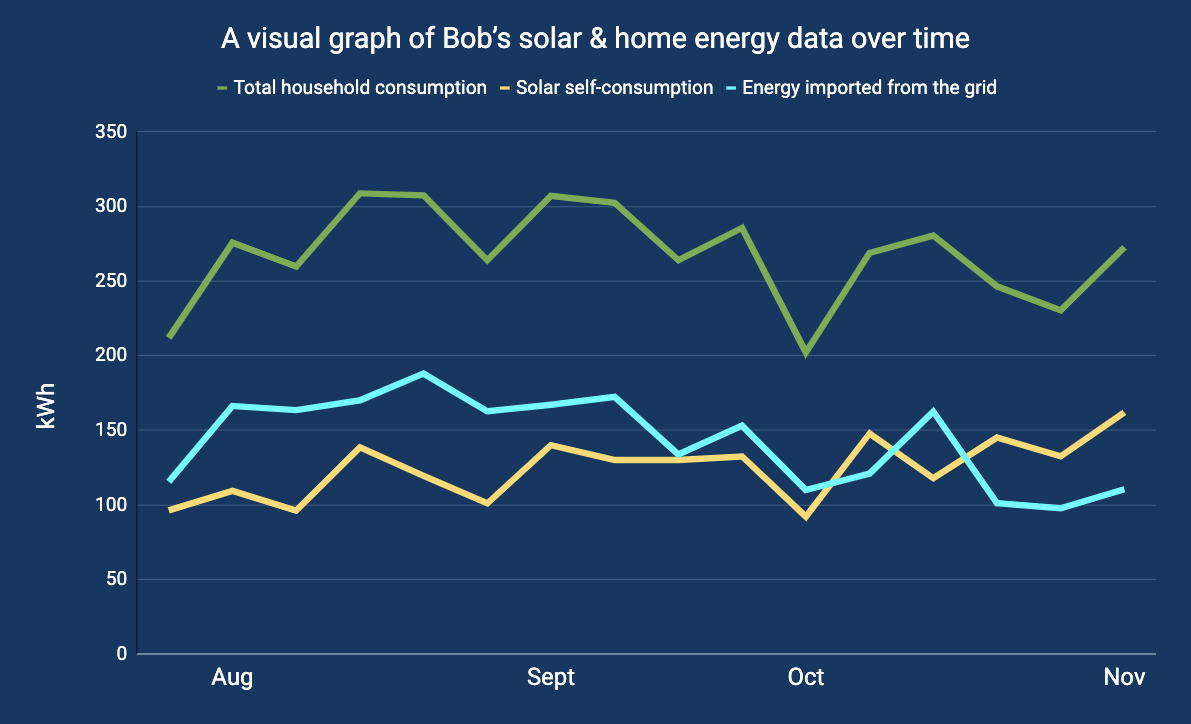Powersensor enables Sydney homeowner to charge their Tesla electric car at home with no cost
Customer Profile
Bob | Surry Hills, NSW
Solar inverter: 10kWh
Using solar since 2020
Upgrading their home energy setup
Bob and his wife invested in an electric car (Tesla) in September 2020. Since not all Tesla charging stations aren’t free in Australia, they decided to purchase a solar system to help charge their electric car at home as well.
Bob has always had an interest in solar energy and wanted to make his home more energy efficient and less grid reliant. They felt it was the right time to upgrade their home energy setup, to lower their energy bills by maximising solar self-consumption.
After installing a 10kWh rooftop solar system, Bob purchased a Powersensor Advanced Solar Monitor to make the most of his solar investment. Bob originally chose an optical reader energy monitor solution. These energy monitors work by detecting the LED pulses emitted by regular household electricity meters when the house is consuming electricity from the grid.
Before discovering Powersensor
However, Bob discovered that the optical reader energy monitor relies solely on detecting the LED pulses on electricity meters. These are ineffective for homes with solar, because they can only provide household consumption data. When the home is producing solar, there is no way of knowing:
How much solar is feeding back into the grid
How much solar is self consumed
Their total solar panel output (gross solar generation)
To top it off, Bob’s energy retailer made a change to his electricity meter. It emitted pulses when he was consuming from and feeding energy into the grid, causing his optical reader energy monitor to be unable to determine his energy consumption accurately. This meant Bob’s optical reader energy monitor had effectively stopped working.
"Powersensor is better for our household as it is simple for a non-tech person to see when there is excess solar at home and exactly how much."
After discovering Powersensor
After switching to Powersensor, Bob was able to monitor his grid consumption, his feed-in to the grid, and his solar output. Within less than three months, Bob had reduced his feed-in to the grid by 25.56%, and maximised his solar self-consumption at home by 14.58%.
From the get go, Bob was already impressed by how easy it was to DIY install the solar monitor. Though Bob’s background is in electricity, he was confident that his family would also be able to use Powersensor without issue, with the help of the intuitive mobile app. “Powersensor is better for our household as it is simple for a non-tech person to see when there is excess solar at home and exactly how much.”
A visual comparison of Bob’s total household consumption, solar self-consumption, and energy imported from the grid.
To make the most of his rooftop unit, Bob started using excess solar to charge his electric car. He was able to use Powersensor to monitor in real-time when and how much solar he was exporting. Instead of feeding excess solar back into the grid, he would turn on his electric car charger, which can be done through an app on his phone. Depending on how much solar he was exporting, Bob would use the app to switch from low power to high power charging.
Thanks to Powersensor, Bob says he now never pays to charge his electric car with energy from the grid.
What’s the cost of charging electric cars in Australia?
Typical electric car batteries range from 24-100kWh capacities. An electric car with a 60kWh battery can travel more than 300 km on a full charge, and the fact that NSW motorists travel the most kilometres per year on average combined with rapidly rising energy prices, Bob would be looking at a significant increase in his electricity bill if he were to charge his electric car from the grid.
Average cost of fully charging an electric car with a 60kWh battery by state: (State / Average Electricity Rate / Charge Cost)
ACT - 30.3270c/kWh - $18.20
NSW - 31.2363c/kWh - $18.74
QLD - 25.45c/kWh - $15.27
SA - 40.1830c/kWh - $24.11
VIC - 24.4440c/kWh - $14.67
WA - 25.02c/kWh - $15.01
Source: Susannah Guthrie, Drive, August 2022
The result? Bob spends no money charging his electric car at home. By using Powersensor, both Bob and his wife are able to understand when to switch on their Tesla charger. And with the real-time export and consumption data provided, they can tell when they are producing enough solar to switch to quicker, high-power charging without drawing anything from the grid.
Maintaining the charge in their electric car helps the battery last longer while ensuring that Bob and his family are ready to hit the road anytime, at no extra cost.
Bob’s Powersensor Solution
Advanced Solar Monitoring Solution





